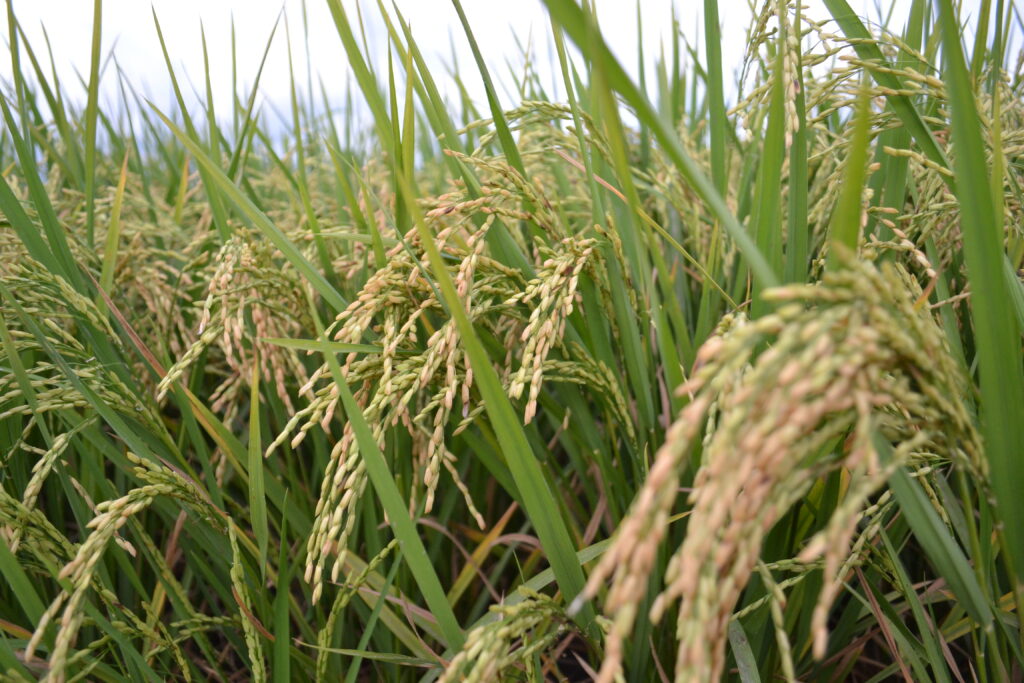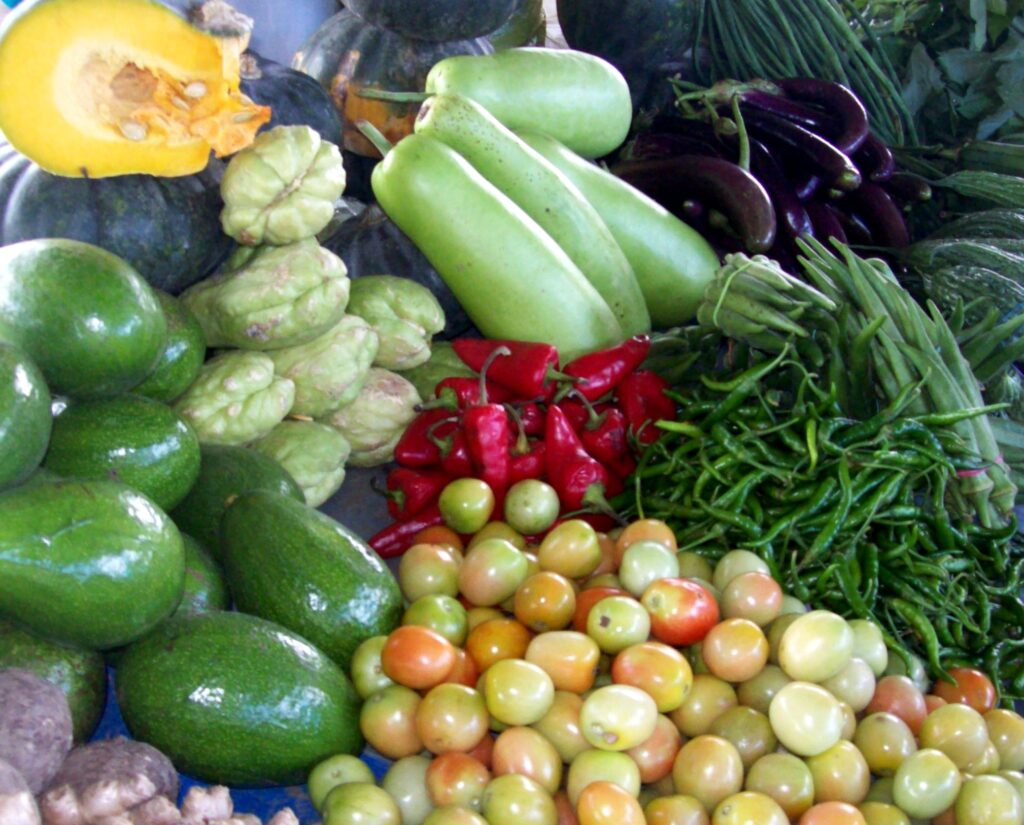FUNCTIONAL FOODS IN THE OFFING
Text and Photos by Henrylito D. Tacio
Coming soon: foods that contain higher levels of phytosterols for reduced cholesterol, crops with higher levels of carotenoids for increased vitamin A, potato loaded with antioxidants, low-linolenic soybean, and high-lysine corn.
These may be far fetched but the possibilities are endless. Thanks to genetic engineering, the crops of the future will no longer be just dreams but realities. Already, the world has seen eggplant and corn that defy pests, vitamin A-rich rice, herbicide tolerant soybean, virus resistant papaya, and high laureate canola.
They are called genetically modified (GM) crops, which are products of biotechnology, a “technique that makes use of organisms (or parts of it) to make or modify products, to improve plants or animals, or to develop microorganisms for specific purposes.”
GM crops are made through a process called genetic engineering. In an article, author Myriam G. Layaoen explains how it is done: “Genetic engineering involves the process of copying a gene from one living organism and adding it to another through genetic transformation technique.”
A gene is a biological unit that determines an organism’s inherited characteristics such as size, shape, taste, color, increased yields, or disease resistance. Those that are artificially inserted into an organism are known as transgenes.

Genetic engineering
“Like conventional breeding, genetic engineering aims to produce a better plant by combining the ‘good’ genes of two superior parent plants,” Layaoen points out. “But instead of crossing sexually compatible parents to combine and recombine thousands of genes, genetic engineering employs gene splicing to directly transfer just one or a few genes.”
For further explains, Layaoen quoted Dr. Antonio Alfonso, who was then a plant breeder at the Philippine Rice Research Institute (PhilRice) and the Crops Biotechnology Center director: “It is literally cut-and-paste work. Certain enzymes enable the cutting and pasting. You cut a desired gene from the donor parent and paste it to the receiver parent. In that manner, you specifically target a gene that expresses the trait you want to transfer. The output, therefore, is an improved version of the original material since a new trait was added.”
According to Dr. Alfonso, genetic engineering is employed because of the following reasons: the trait is not present in the germplasm of the plant; the trait is very difficult to incorporate using conventional breeding methods; and it would take a very long time to introduce and/or improve such trait in the crop through conventional breeding.
In 1994, Calgene’s delayed-ripening tomato became the first GM food crop to be produced and consumed in an industrialized country. Other GM crops — corn, soybean, cotton, canola, and eggplant — followed. These are called “first generation” crops which have proven their ability to lower farm-level production costs.
Now, research is focused on “second generation” GM crops that will feature increased nutritional and/or industrial traits. These crops will have more direct benefits to consumers. Examples include: potatoes with higher starch content and inulin; edible vaccines in corn, banana, and potatoes; corn varieties with low phytic acid and increased essential amino acids; healthier oils from soybean and canola; and allergen-free nuts.
Functional foods
These are called functional foods. It is defined as “foods or dietary components that claim to provide health benefits aside from basic nutrition.” These foods contain biologically active substances such as antioxidants that may lower the risks from certain diseases associated with aging.
“Diet and health are closely related,” explains the International Service for the Acquisition of Agri-biotech Applications (ISAAA). “Thus crops are now being enhanced through biotechnology to increase levels of important biologically active substances for improved nutrition, to increase body’s resistance to illnesses, and to remove undesirable food components.”
Just recently, scientists from John Innes Centre received an award for “Most Promising Innovator 2014” for developing tomato varieties with high levels of beneficial compounds. Prof. Cathie Martin and Dr. Eugenio Butelli aimed to redefine the meaning of healthy food by boosting healthful compounds in tomato.

According to the news report, one variety has purple fruit containing the same level of anthocyanins as half a basket of blueberries. Another one produces large orange tomatoes weighing more than 100 grams, which has the same amount of a beneficial compound as 27 bottles of red wine. Another tomato variety has yellow fruit which contains levels of genistin, present in soy products, equal to 150 grams of tofu. The fourth variety has quercetin and kaempferol, health-promoting compounds normally found in capers, radishes, onions, and watercress.
“The bioactive compounds present in the tomato varieties are known to offer protection against inflammation, cancer, and cardiovascular diseases,” the report said. “Thus, the research will help elucidate how the protective mechanisms function and which compounds are most helpful for the body.”
Linoleic acid (LA), alpha-linolenic acid (ALA), and polyunsaturated fatty acids (PUFAs) are some of the essential fatty acids. These are considered essential because they cannot be synthesized by the human body. A large number of scientific research studies suggest that higher dietary essential fatty acid intakes are associated with reductions in cardiovascular disease risk.
The main food sources of the long-chain Omega-3 fatty acids are fish. Plants lack the enzymes to make long-chain fatty acids needed by human beings. Scientists at the University of Bristol modified Arabidopsis thaliana to produce long-chain PUFAs.
“The transgenic plants were modified with three genes encoding different enzymes that convert linoleic and alpha-linoleic acids to the long-chain PUFAs,” the ISAAA briefing paper said. “This experiment opened the possibility for the improvement of crops.”
Antioxidants are important biological compounds that can protect the body by neutralizing the activity of the harmful free radicals, which are generated by pollution, radiation, cigarette smoke and herbicides. Antioxidants come in different forms with phenolic compounds — like flavonoids and tocopherols — being in the most common. They are found in most fruits and vegetables such as cabbage, carrots, broccoli, aubergine, berries, and potatoes. They are plentiful in coffee, tea, and red wine.
To enhance the flavonoid content of potatoes, some scientists conducted single and multiple-gene transformations for the enzymes in the biosynthesis of flavonoids. The result of the study: GM plants exhibited significantly increased levels of phenolics and improved antioxidant capacity.
“Functional foods through biotechnology can provide developing countries food sources with increased nutritional value,” the ISAAA briefing paper noted. “Staple starchy crops such as cassava and yams have been modified to lower the amylopectin content of starch, which has been associated with diet-related conditions such as type 2 diabetes.
“In areas of drought and poor soil quality, where high quality proteins are scarce, genetic modification has been undertaken on some legumes and in soybean to increase the levels of high proteins,” the briefing paper added.
Food safety
Despite all these, people are still worried about eating GM products. Are they safe to eat? Here’s what the Geneva-based World Health Organization says: “The potential direct health effects of GM foods are generally comparable to the known risks associated with conventional foods, and include, for example, the potential of allergenicity and toxicity of components present, and the nutritional quality and microbiological safety of the food.”
The Scientists in Support of Agricultural Biotechnology issued this statement: “The addition of new or different genes into an organism by recombinant DNA techniques does not inherently pose new or heightened risks relative to the modification of organisms by more traditional methods, and the relative safety of marketed products is further ensured by current regulations intended to safeguard the food supply.
“No food products, whether produced with recombinant DNA techniques or with more traditional methods, are totally without risk. The risks posed by foods are a function of the biological characteristics of those foods and the specific genes that have been used, not of the processes employed in their development,” the statement added.

